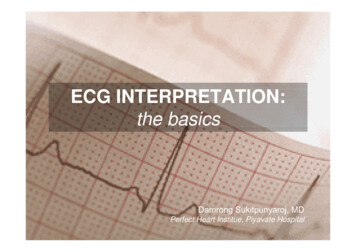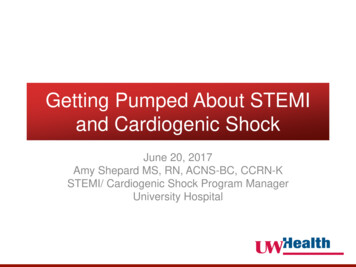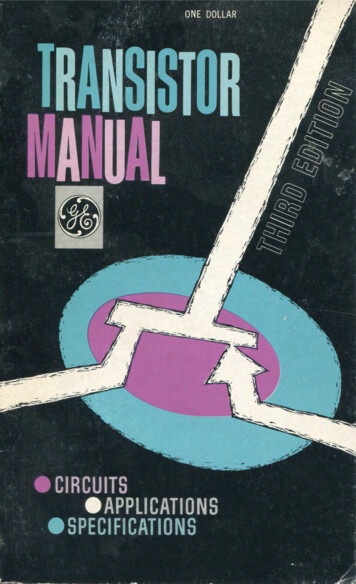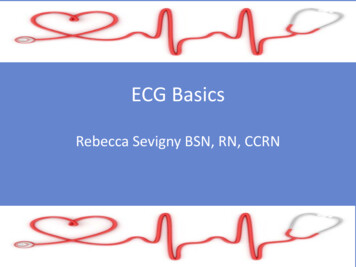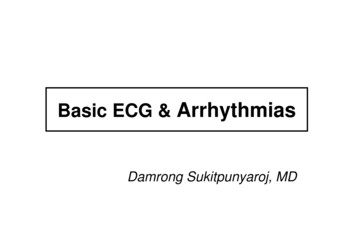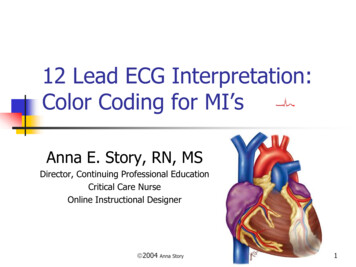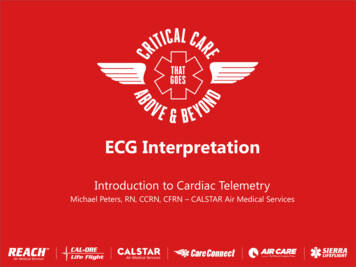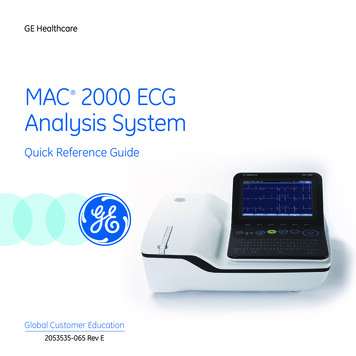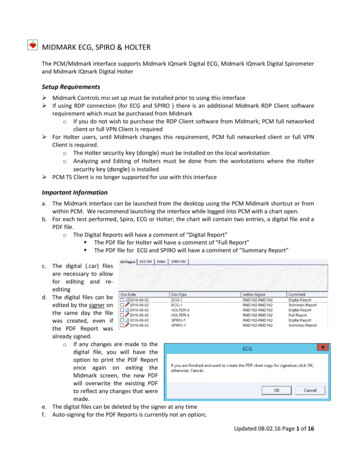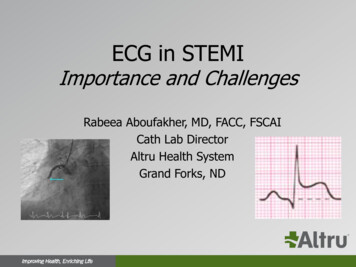
Transcription
ECG in STEMIImportance and ChallengesRabeea Aboufakher, MD, FACC, FSCAICath Lab DirectorAltru Health SystemGrand Forks, ND
Disclosures No relevant disclosures
Overview IntroductionECG in the diagnosis of STEMILBBB/paced rhythm/LVHAcute pericarditis/myocarditisEarly repolarizationOther causes of ST elevation– Stress induced CMP– PE– Ventricular aneurysm
Introduction
Acute Coronary Syndromes Coronary heart disease is a major cause of death anddisability in developed countries and the world Unstable coronary disease (ACS) is characterized byplaque rupture or erosion with associated thrombosis– STEMI– NSTEMI– Unstable angina STEMI is a true medical emergency
Time is Muscle
Outcomes based on time to reperfusion
Classification of ACS
Historical Introduction 1895– Einthoven, using an improved electrometer and a correctionformula, distinguishes five deflections which he names P, Q, R, Sand T 1912– Einthoven’s triangle is described 1918– Bousfield describes the spontaneous changes in the ECG duringangina
Historical Introduction 1920– Harold Pardee, New York, publishes the first ECG of an AMI in ahuman and describes the T wave as being tall and "starts from apoint well up on the descent of the R wave". Pardee HEB. Anelectrocardiographic sign of coronary artery obstruction. Arch IntMed 1920;26:244-257 1930– Sanders first describes infarction of the right ventricle 1942– The augmented limb leads were added to arrive at the 12 leadECG we use today
ECG in the Diagnosis of STEMI
ECG in STEMI ECG is a mainstay in the initial diagnosis of patients withsuspected ACS which will dictate management In patients with acute STEMI the ECG evolves through atypical sequence
ECG in STEMI Definition of STEMI– New ST elevation at the J point in two contiguous leads of 0.1mV in all leads other than leads V2-V3– For leads V2-V3 the following cut points apply: 0.2 mV in men 40 years, 0.25 mV in men 40 years, or 0.15 mV in women Other conditions which are treated as a STEMI– New or presumed new LBBB– Isolated posterior MI The presence of reciprocal ST depression helps confirmthe diagnosis
Localization of Infarction Septal: V1 and V2Anterior: V3 and V4Lateral: V5 and V6Anteroseptal: V1-V4Anterolateral: V3-V6Extensive anterior: V1-V6Inferior: II, III, aVFHigh Lateral: I, aVLPosterior: tall R wave and ST depression in V1-V2
Localization of Infarction
Example
Example
Example
Example
If in doubt repeat ECG
Repeat ECG
Repeat ECG
ECG ImpostersLBBB and Paced Rhythm
LBBB LBBB occurs when normal electrical activity in the HisPurkinje system is interrupted Most often occurs in patients with underlying heartdisease Can be functional (rate related) and can be seen inasymptomatic individuals without structural heartdisease Obscures ischemic changes on the ECG
LBBB A new LBBB in a patient with symptoms consistent withMI should be treated like a STEMI LBBB is associated with ST changes as part of the ECGpattern (discordant changes) Certain ST changes can be used to diagnose AMI in thesetting of LBBB mainly called “concordant changes”
LBBB
Ventricular Paced Rhythm
LVH
ECG ImpostersAcute Pericarditis/Myocarditis
Acute Pericarditis Common cause of chest pain with multiple etiologiesmost commonly viral or idiopathic Chest pain is typically pleuritic in nature and is positional The pain responds well to NSAIDS The presence of a friction rub on exam
Acute Pericarditis Usually diffuse ST elevation Can be associated with PR depression (elevation in aVR) No reciprocal changes The morphology of the ST segment
ST morphology
Acute Pericarditis
Acute Myocarditis Myocarditis can occur alone or in combination withpericarditis Can cause similar ST changes to pericarditis Focal myocarditis can cause regional ST elevation evenwith ST depression and can be difficult to distinguishfrom a STEMI
Focal Myocarditis
ECG ImpostersNormal Early Repolarization
Early Repolarization A usually benign ECG pattern with an incidence of 5 to13% of people so very common especially in younghealthy athletes ST elevation (J point elevation) of 1 mm or more in 2 ormore contiguous leads (usually inferior or lateral or both) ST morphology similar to pericarditis No reciprocal changes
Early Repolarization
ECG ImpostersStress Induced CardiomyopathyLV AneurysmPulmonary Embolism
Stress Induced Cardiomyopathy Also known as apical ballooning, takotsubocardiomyopathy or broken heart syndrome More common than previously thought More common in elderly women but can occur in othergroups An emotional or medical trigger such as loss of a lovedone or severe pain or medical illness
Stress Induced Cardiomyopathy Patients usually have ECG changes including T waveinversions, ST depression or ST elevation Elevated enzymes and apical hypokinesis The only way to make the diagnosis at times is toperform a coronary angiogram (clean coronaries)
Figure 1. Spectrum of ECG patterns observed in 3 patients with psychologically triggered,reversible LV dysfunction that mimics myocardial infarction or acute coronary syndrome.Sharkey S W et al. Circulation. 2005;111:472-479Copyright American Heart Association, Inc. All rights reserved.
Figure 2. LV angiogram in diastole (left) and systole (right) in right anterior oblique projectiondemonstrating wall-motion abnormality characteristic of stress cardiomyopathy.Sharkey S W et al. Circulation. 2005;111:472-479Copyright American Heart Association, Inc. All rights reserved.
LV Aneurysm Persistent ST elevation after MI can be seen whichusually indicates the development of LV aneurysm
Pulmonary Embolism
In Conclusion ECG is the mainstay of diagnosing STEMI which is a truemedical emergency Making the correct diagnosis promptly is life-saving If the clinical picture is consistent with MI and the ECG isnot diagnostic serial ECG at 5-10 min intervals Several conditions can be associated with ST elevationon ECG most commonly LBBB, pericarditis, and earlyrepolarization If in doubt call the cardiologist or activate the cath lab
Thank youQuestions?
ECG in STEMI Definition of STEMI –New ST elevation at the J point in two contiguous leads of 0.1 mV in all leads other than leads V2-V3 –For leads V2
